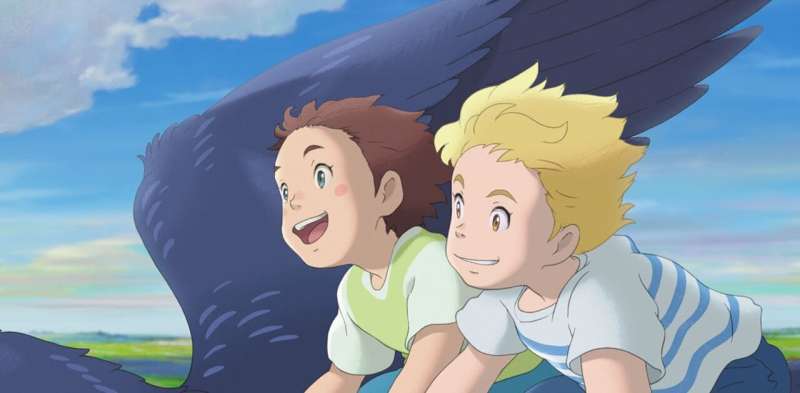This article has been reviewed according to Science X's editorial process and policies. Editors have highlighted the following attributes while ensuring the content's credibility:
fact-checked
trusted source
written by researcher(s)
proofread
'The Imaginary' reveals the many positive skills that playing with imaginary friends can develop

There has been a recent spate of movies about imaginary friends. In the winter, I watched Imaginary, a horror flick about a sinister imaginary friend. By spring, IF had introduced us to a group of invisible characters, and now summer has arrived with "The Imaginary" on Netflix.
"The Imaginary" is nothing like either of the previous movies. It is animated, which enables the viewer to see beautifully crafted imagined landscapes. And where the horror film Imaginary was clearly geared toward adults and IF toward tweens, this movie would be enjoyed by any age group.
It takes an in-depth look at children's imaginations though the lens of a boy named Rudger, who is the imaginary friend of Amanda. Rudger goes on adventures and has a life of his own trying to outwit and escape another human with an evil imaginary friend—or "imaginary companion" as researchers often refer to them, since they are not always friendly.
Few humans can see Rudger and his crew, of course, which causes some interesting problems and innovative solutions between the real and imaginary realms.
One thing this film highlights is the prolific nature of the imaginary companion. Creating these characters is a very normal play activity seen throughout the world, including in autistic children and those who are deaf and blind.
In some studies, over half of the children interviewed have imaginary companions. Many early adolescents report this type of play with imaginary beings, and so do almost 10% of adults.
While the numbers may seem surprising, it all depends on how you classify these companions. I take the stance that if a child creates a mind for their dolls or toys, they are using the same brain mechanisms as for invisible creatures, and therefore these should be included as imaginary companions.
Among adolescents, some diary entries can be considered types of imaginary friend. Even characters created by adult authors or those who play Dungeons & Dragons can fall under this umbrella if they have made a mind for these beings. Companions are created for various reasons, and each companion is unique to their creator.
As a researcher who has studied this behavior for over a decade, it was heartwarming to view the scene in "The Imaginary" where Amanda's mother explains to another adult that Amanda has been playing with an imaginary companion. This mum is clued into the benefits that an imaginary being can offer a child. What she might not know is just how many positive skills are related to this play behavior.
Imaginary companions have been found to improve social skills, knowledge about thinking, internal dialogue and even storytelling and description. These benefits have also been found in autistic children with imaginary companions. All this evidence stresses that parents should not be worried about their children's imaginary beings.
Creating 'paracosms'
"The Imaginary" places the imaginary companions in their own universe, formed in the minds of the children who have made these characters. Creating whole worlds with societies, geographies, languages and cultures that differ from our real world is a practice seen in children who are particularly imaginative and creative with storytelling.
These worlds—called "paracosms" by scientists who investigate imagination—are generally invented in middle childhood. Because of their roots in the imagination, paracosms are thought to be related to imaginary companion creation. While there have been no studies to date that have confirmed this idea, children who create a world for an imaginary companion to occupy and interact in might be elaborating on their previous creative play.
Within their paracosm, the imaginary companions in this movie have their own friends, emotions and activities. Some children see their imaginary characters in the way "The Imaginary" suggests: as autonomous and even out of their control. Others have completely different relationships with their companions, viewing them as an extension of themselves or even acting as a caregiver or parent.
When I go into schools for my research, children sometimes explain to me they can see and hear their imaginary companions, even though they understand that I cannot. The characters act as real friends might for these children, who turn to imaginary beings just as they would to a real friend for anything from conflicts to help and advice.
Although this film is a fantasy, it certainly sparked my curiosity with the flipped perspective of the imaginary companion's worlds—and how we humans might populate it.
Provided by The Conversation
This article is republished from The Conversation under a Creative Commons license. Read the original article.![]()





















